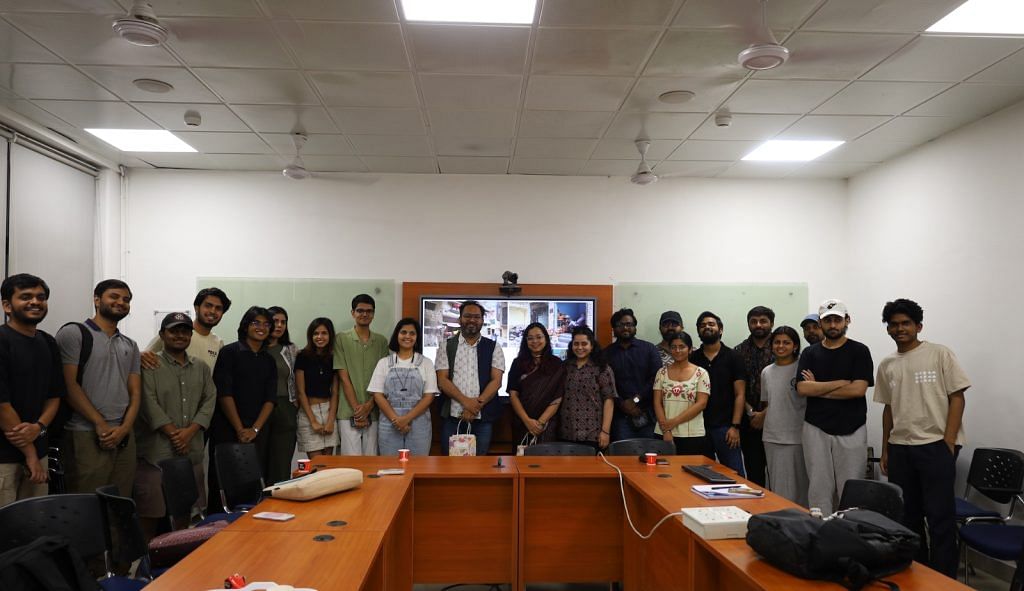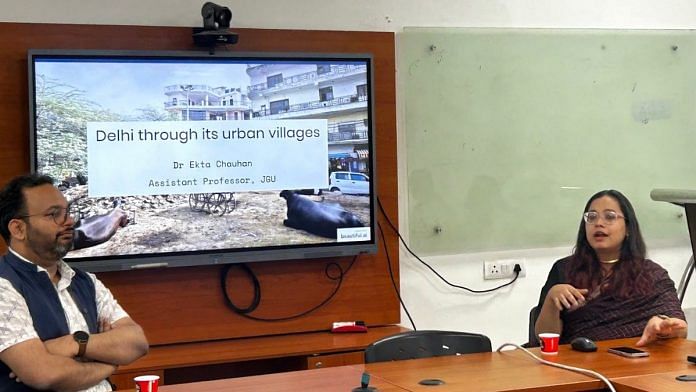New Delhi: Somewhere in Sonipat, there’s a strange sight — an Audi parked permanently in a farm field, between rows of wheat. It’s owned by a local rentier who can’t drive. The car, like its owner, is a symbol of aspiration caught between wealth and inertia. It’s a perfect metaphor for the world Ekta Chauhan, OP Jindal Global University assistant professor and oral historian, has spent years researching—life in urban villages.
Instead of enabling social mobility, the influx of resources in these villages, often manifests as extravagant displays of wealth and deepens existing gender hierarchies.
“The lack of opportunity, and in many cases the need, of paid work for men outside their home leads to a crisis of masculinity,” said Chauhan. Many men, she added, respond by doubling down on patriarchal control as they “ride in their Thars”.
For a firsthand look at the uneasy intersection of the rural and urban, Chauhan invited a bunch of students from IIT-Delhi to her village Khirki in south Delhi on a Sunday morning. In her guided tour, followed on 8 April by a talk, she stressed on both the tangible as well as the intangible changes.
The session, titled Sheher Mein Gaon: Delhi through its urban villages, was organised by the HSS Research Scholars Group at IIT and chaired by Dr Saurabh Tewari of the Design Department.

Urban villages, Chauhan reminded the audience, are not waiting rooms on the road to modernity. They are complex, living sociological realities in their own right.
One stop on the walk was Khirki Masjid, a 14th-century monument built by Khan-i-Jahan Junan Shah of the Tughlaq Dynasty. Once a hub of community life, the mosque is now home to bats and false narratives about its past. Some claim it was once a royal darbar—a misconception Chauhan said stems from shifting popular memory, misinformation, and a widening disconnect between people and heritage.
Her research traces a generational shift. The generation right after Partition grew up with a sense of detachment from the mosque. The subsequent generation rarely visits the site at all.
Also Read: Gujarat had its own way of life. Harappan influence turned it into a hub of innovation
More than land deals
The shift in social structure has led to a situation where upper caste women have “receded into the domestic sphere”, while lower caste women, once trapped in feudal hierarchies, now have a possibility “to move up the system” through education and employment, Chauhan said.
Turning to spatial inequality, Chauhan pointed to Delhi’s unauthorised settlements and the stark disparities that play out across them. In Sangam Vihar, one of the capital’s most densely populated informal settlements, residents still struggle to access basic services like piped water. Just next door lies the affluent enclave of Sainik Farms.
Chauhan described how Sainik Farms functions almost like an independent republic, with residents generating their own electricity, operating private sewage treatment plants, and even charging a kind of “society tax” for those passing through.
Caught between unmet government promises and unchecked private interests, many residents have taken matters into their own hands. They are undertaking projects such as paving roads or wiring electricity, carried out without institutional help.
Just 3.8 km away from the IIT campus, where the session was being held lies the gentrified Hauz Khas, one of Delhi’s 135 urban villages, home to designer boutiques and twee cafes. When the discussion shifted to it, Chauhan said that whether it was a success or failure was “an ongoing story”.
The session closed on a reflective note, challenging the idea that land can be fully understood solely through its market value or degree of urbanisation.
“A market sale of land does not capture its complete value”, Chauhan said. “Land is an intermittent commodity, especially in Indian society where its value is not only monetary but also has association with caste, pride and power.”
Aleeza Ahmed is an intern who graduated from Batch 2, ThePrint School of Journalism.
(Edited by Asavari Singh)






